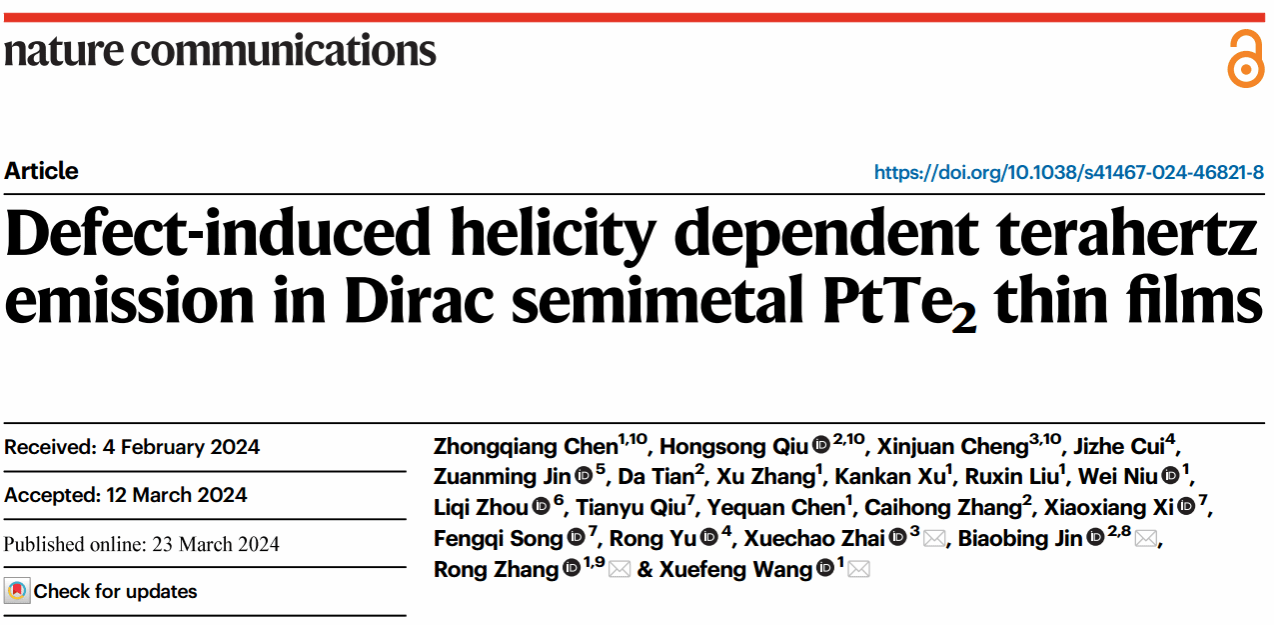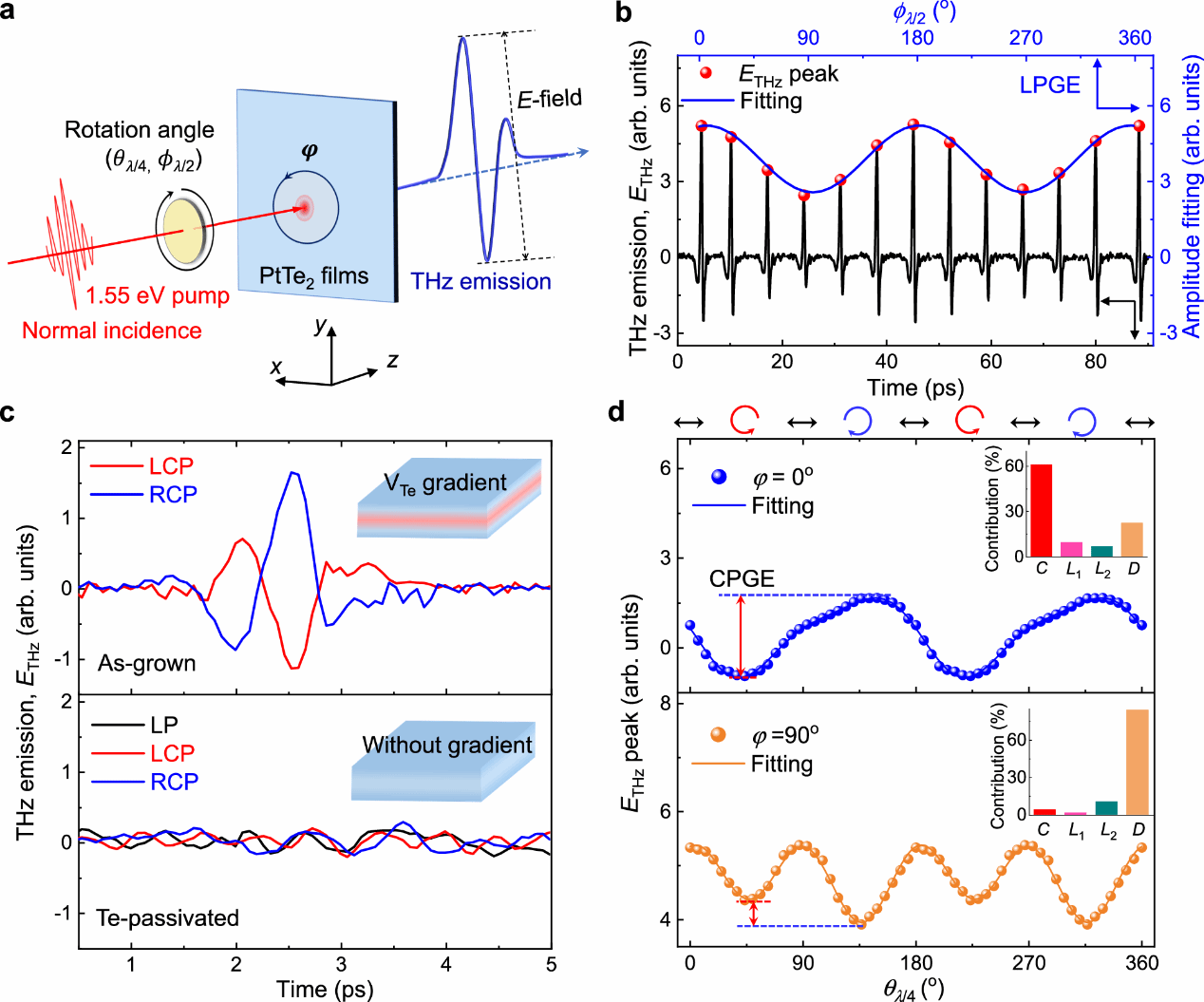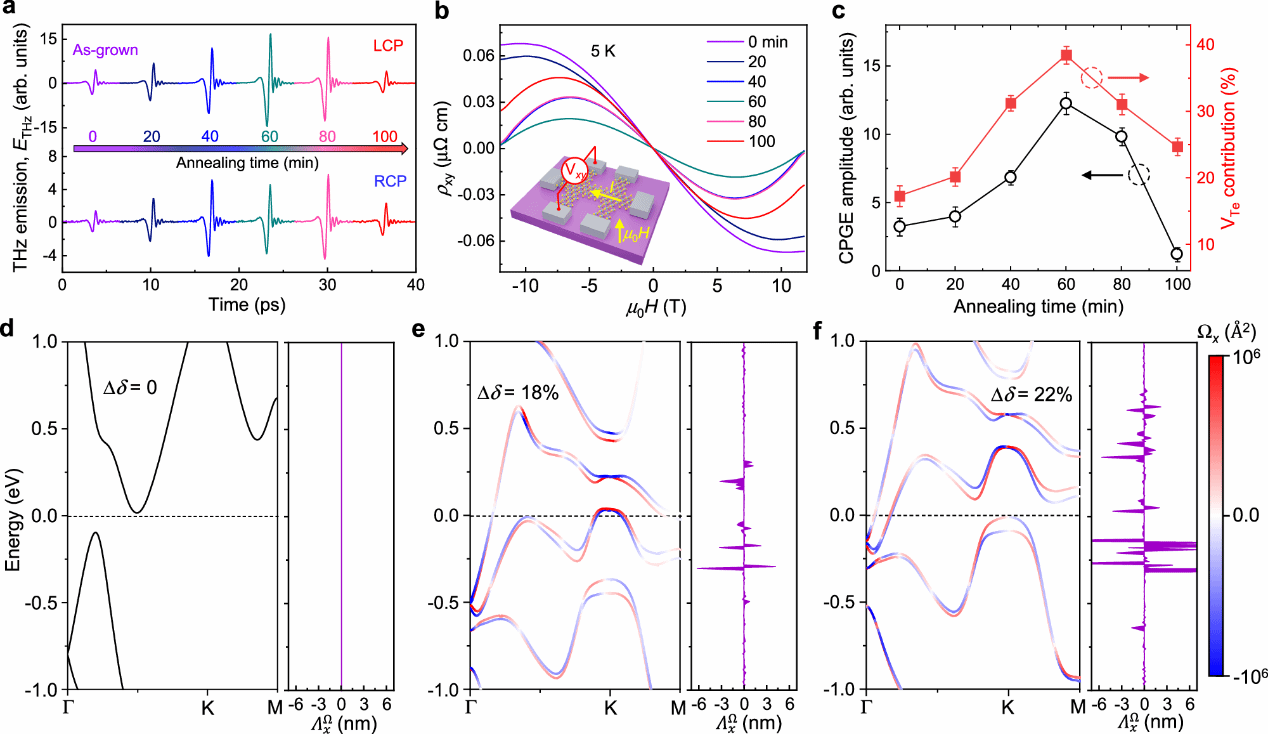Recently, the research team led by Prof. Zhang Rong, Academician of the Chinese Academy of Sciences, and Prof. Wang Xuefeng from the School of Electronic Science and Engineering at Nanjing University, in collaboration with multiple research teams, have achieved the Berry-curvature-dipole-driven efficient spin photocurrent with THz emission through creating a defect gradient to break inversion symmetry in Dirac semimetal PtTe2 thin films. The quantitative relationship between Berry curvature dipole and spin photocurrents is built up via defect engineering.
These interesting results were published in the reputed journal of Nature Communications on March 23, 2024 (https://doi.org/10.1038/s41467-024-46821-8), which is entitled “Defect-induced helicity dependent terahertz emission in Dirac semimetal PtTe2 thin films.” PhD student Chen Zhongqiang, Dr. Qiu Hongsong and Cheng Xinjuan contributed equally to this work. The corresponding authors are Prof. Wang Xuefeng, Prof. Zhang Rong, Prof. Jin Biaobing and Prof. Zhai Xuechao.

The abstract of the paper is as following:
Nonlinear transport enabled by symmetry breaking in quantum materials has aroused considerable interest in condensed matter physics and interdisciplinary electronics. However, achieving a nonlinear optical response in centrosymmetric Dirac semimetals via defect engineering has remained a challenge. Here, we observe the helicity dependent terahertz emission in Dirac semimetal PtTe2 thin films via the circular photogalvanic effect under normal incidence. This is activated by a controllable out-of-plane Te-vacancy defect gradient, which we unambiguously evidence with electron ptychography. The defect gradient lowers the symmetry, which not only induces the band spin splitting but also generates the giant Berry curvature dipole responsible for the circular photogalvanic effect. We demonstrate that the THz emission can be manipulated by the Te-vacancy defect concentration. Furthermore, the temperature evolution of the THz emission features a minimum in the THz amplitude due to carrier compensation. Our work provides a universal strategy for symmetry breaking in centrosymmetric Dirac materials for efficient nonlinear transport.

Figure 1. Helicity dependent THz emission observed in symmetry-broken PtTe2 films.

Figure 2. Microscopic origin of the helicity dependent THz emission through defect engineering.
Source: School of Electronic Science and Engineering
Correspondent: Wang Xuefeng